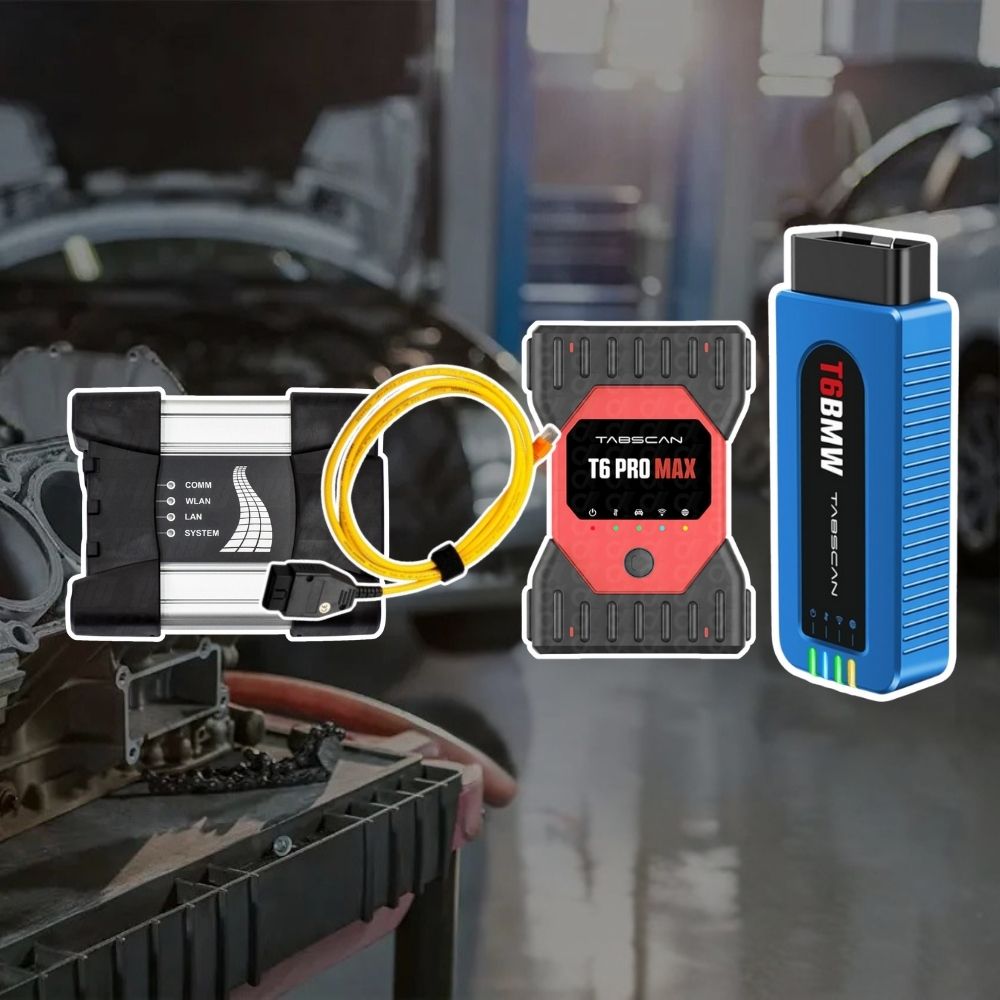
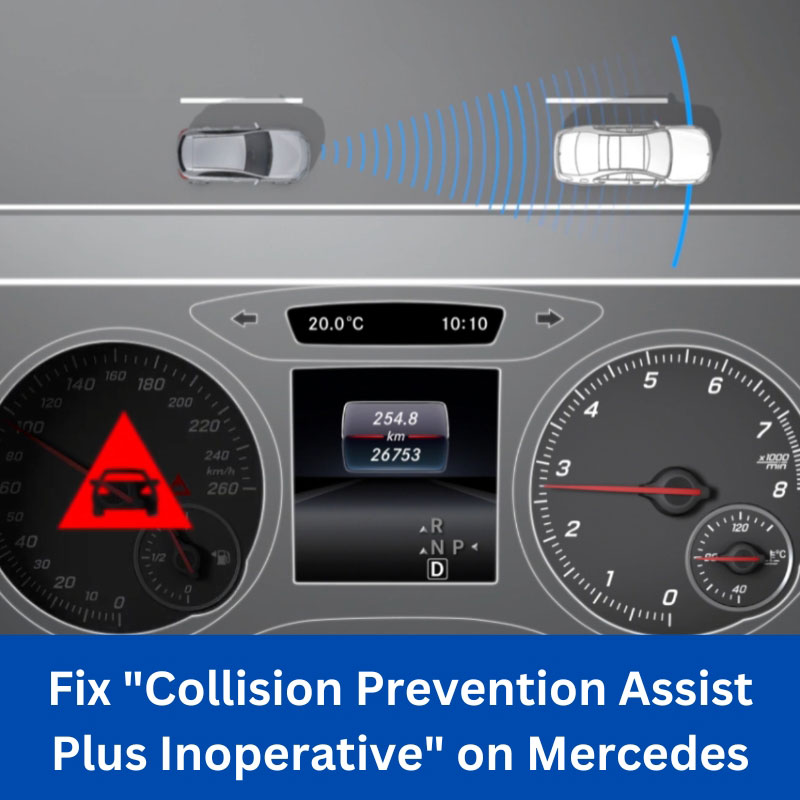
How to Fix “Collision Prevention Assist Plus Inoperative” on Mercedes
Contents
- 1. What is “Collision Prevention Assist Plus Inoperative”?
- 1.1. Is It Safe to Drive with This Warning?
- 1.2. What This System Does When It’s Working Normally
- 2. Causes of Collision Prevention Assist Plus Inoperative
- 3. Tools for Diagnosis and Repair Mercedes “Collision Prevention Assist Plus Inoperative”
- 4. Methods to Fix “Collision Prevention Assist Plus Inoperative”
- Method 1: Repairing and Reprogramming the System
- Method 2: Disabling the “Collision Prevention Assist Plus Inoperative” Warning
- Conclusion
The Collision Prevention Assist Plus system is a crucial safety feature in Mercedes-Benz vehicles. However, it can sometimes display an error message: “Collision Prevention Assist Plus Inoperative.” This issue can be caused by various factors, including sensor damage, electrical faults, or software-related problems. In this article, we will explore the causes, error codes, and solutions to fix this issue.
1. What is “Collision Prevention Assist Plus Inoperative”?
When your Mercedes-Benz displays the warning “Collision Prevention Assist Plus Inoperative” on the dashboard, it means the forward collision warning and automatic braking system is currently disabled due to a malfunction or communication error.
This safety feature, part of Mercedes’ ADAS (Advanced Driver Assistance Systems), is designed to monitor the road ahead using a radar sensor, and if it detects a potential front-end collision, it will:
-
Alert the driver visually and audibly,
-
Pre-charge the brakes to reduce stopping distance,
-
Automatically apply partial or full braking if the driver does not react in time.
When this system is inoperative, your car can no longer detect or respond automatically to a potential crash ahead, increasing your risk of rear-end collisions in emergency situations.
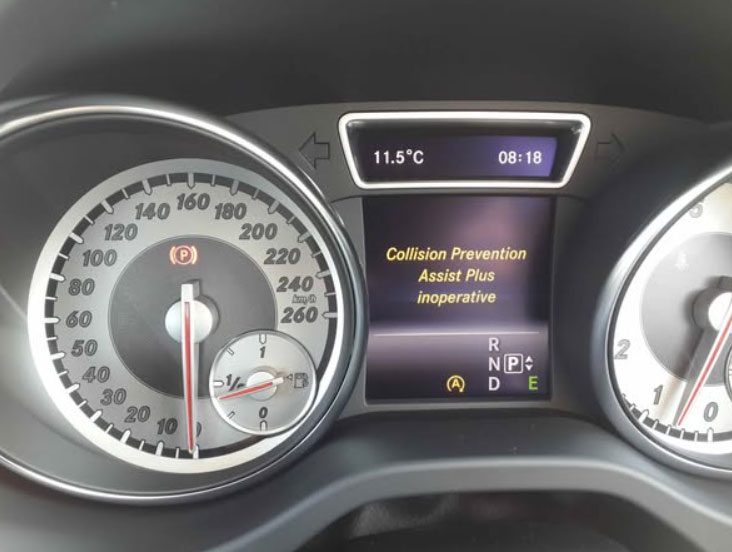
1.1. Is It Safe to Drive with This Warning?
Technically, yes, your vehicle can still be driven with this warning — the engine, transmission, and other core systems are not affected.
However, you are now missing a critical safety layer that is especially important in heavy traffic, on highways, or in sudden braking situations. If you’re used to your Mercedes automatically warning or braking for you, this can increase your risk without you realizing it.
In short:
✅ Driveable – no limp mode or engine shutdown
⚠️ Not safe for long-term driving without addressing the issue
If you’re relying on this system (especially in city traffic or while using Cruise Control), you should get it diagnosed and fixed as soon as possible.
1.2. What This System Does When It’s Working Normally
The Collision Prevention Assist Plus system works using a front-mounted radar sensor (typically hidden behind the front grille or emblem). It continuously measures the distance and relative speed between your car and the vehicles ahead.
When working properly, it:
-
Warns the driver if you’re approaching a vehicle too quickly.
-
Prepares the braking system to react more effectively.
-
Can apply autonomous emergency braking (AEB) if it senses an imminent collision and the driver doesn’t react in time.
Some Mercedes-Benz models also integrate this feature with:
-
Adaptive Cruise Control (DISTRONIC)
-
Brake Assist System (BAS PLUS)
-
Cross Traffic Assist or Pedestrian Detection
When the warning light comes on, all these interconnected features may also be disabled, depending on the model and severity of the fault.
=> Recommended to You:
2. Causes of Collision Prevention Assist Plus Inoperative
The system failure can result from several factors, including:
- Physical damage: Accidents or impacts can damage the front radar or control module.
- Rodent damage: Wires being chewed by rodents can cause electrical issues.
- Water damage: Flooding or water intrusion (hydrostatic lock) can damage the system.
- Dirty or obstructed radar sensor: Dirt, fog, or ice can block the sensor’s ability to detect objects.
- Faulty control module: A malfunctioning control unit may need repair or replacement.
- Broken wiring or electrical disconnection: Wiring problems can cause communication loss between the radar and the ECU.
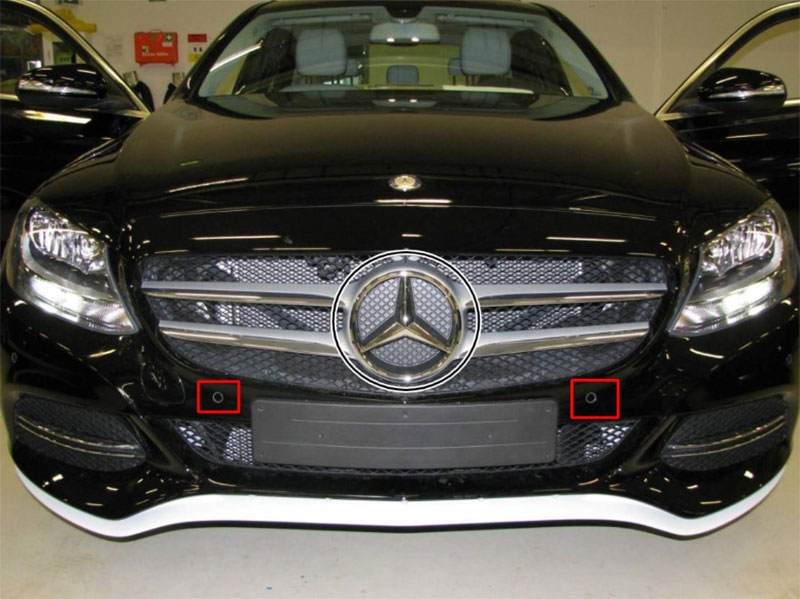
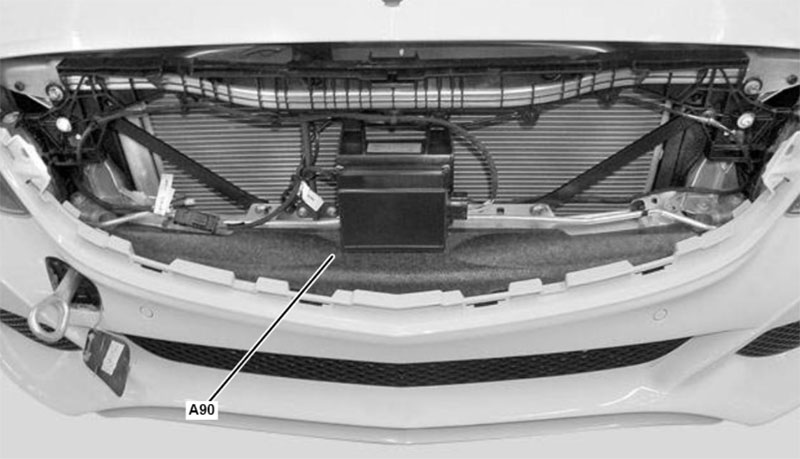
3. Tools for Diagnosis and Repair Mercedes “Collision Prevention Assist Plus Inoperative”
Below are the essential tools and software you’ll need to properly detect and solve the issue.
3.1. XENTRY Diagnosis (Official Mercedes-Benz Diagnostic Software)
✅ Must-Have Tool
-
Purpose: Scan for DTCs (Diagnostic Trouble Codes) from the radar sensor, control module, and related ADAS systems.
-
What It Does:
-
Reads Mercedes-specific error codes
-
Performs guided fault finding (guided tests).
-
Shows live data and radar sensor communication.
-
Clears faults after repairs.
-
-
Why You Need It: This is the only fully supported tool for Mercedes-Benz vehicles. It’s the first step in any professional diagnosis.
3.2. DTS Monaco or Vediamo (Engineering Software for Mercedes)
⚙️ Advanced Coding & Programming Tool
-
Purpose: Used to reprogram, re-code, or disable features in the vehicle control modules.
-
Functions:
-
Change or adapt VIN in new/replacement modules.
-
Code new radar sensors or modules to match the car’s configuration.
-
Disable the Collision Prevention Assist Plus feature (if choosing not to repair).
-
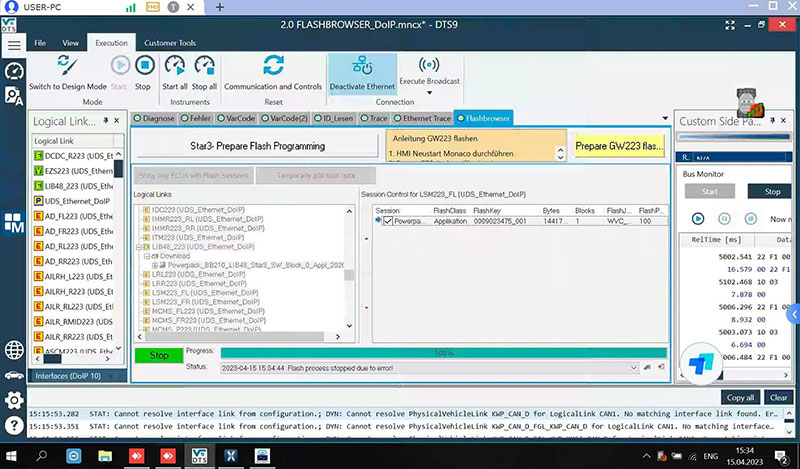
-
Why You Need It: If you replace the radar sensor or control module, it won’t work unless coded correctly. DTS Monaco or Vediamo allows you to do this outside of Xentry.
=> Click here to Download DTS Monaco Software
=> Click here to Download Vediamo Software
3.3. Mercedes-Benz-Compatible Multiplexer (C4, C5, or C6 DoIP)
-
Required to use Xentry, DTS Monaco, or Vediamo
-
Connects your laptop to the car’s diagnostic port (OBD2).
-
C6 DoIP is best for newer Mercedes-Benz models (2017+).
3.4. Multimeter or Power Probe
🔌 For Electrical Testing
-
Use Cases:
-
Check for power supply and ground at the radar sensor.
-
Test continuity of wiring from the sensor to the control unit.
-
Detect rodent damage, broken wires, or voltage drop.
-
3.5. Mercedes Wiring Diagrams (WIS or EPC Systems)
🧩 Crucial for Tracing Wiring and Fuse Layouts
-
Helps locate:
-
Power supply lines to radar and module.
-
Grounding points.
-
Fuse box diagrams and relays related to ADAS.
-
3.6. Basic Hand Tools
🔧 Must-have in Any Workshop
-
Torx drivers and trim removal tools to access:
-
Radar sensor (usually behind the grille or bumper).
-
Control module (often behind the dash or in the engine bay).
-
-
Socket set and electrical tape for minor harness repairs.
3.7. Radar Calibration Tool (Optional in Some Models)
🎯 Needed if Radar Is Replaced or Realigned
-
Some models may require a radar reflector or target board to perform calibration.
-
Others may allow for static calibration via Xentry software.
3.8. Optional: OBD2 Scanner with Mercedes Support (DIY Level)
-
Examples: iCarsoft MB V3.0, Launch X431, Autel MaxiSys MS906.
-
Can read/clear codes but limited for coding.
-
Useful for basic inspection before deciding if advanced software is needed.
4. Methods to Fix “Collision Prevention Assist Plus Inoperative”
There are two main ways to fix this issue:
Method 1: Repairing and Reprogramming the System
This method involves identifying the cause and fixing the faulty components.
Step 1: Diagnose the Issue
- Use Xentry Diagnosis to read fault codes and determine the root cause of the error.
Step 2: Identify and Replace Faulty Components
- Based on the DTC codes from Xentry, locate the faulty part (sensor, wiring, or control module).
- Replace any damaged components.
Common Diagnostic Trouble Codes (DTCs) on Xentry Diagnosis
When scanning the vehicle using Xentry Diagnosis, the following DTC (Diagnostic Trouble Codes) may appear:
- C10C755 – Coding error
- C10C7FB – Faulty module that requires replacement
- B1C3200 – Vehicle accident damage; requires replacement of the control unit
- B210E00 – Electrical circuit error causing loss of power to the control module
- B220600 – Incorrect VIN in the control module; requires reprogramming
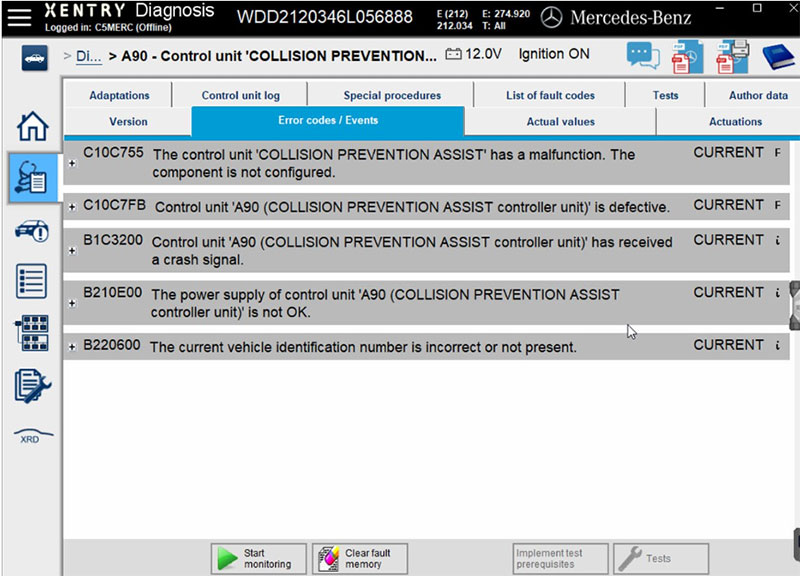
Step 3: Coding and Programming
- Use DTS Monaco or Vediamo to reprogram and code the new parts to the vehicle’s system.
Step 4: Clear Error Codes
- Use Xentry Diagnosis to reset the error codes.
Step 5: Test Drive
- Restart the vehicle and test the system to ensure everything functions correctly.
✅ Advantages: This method fully restores the Collision Prevention Assist Plus feature, making the vehicle as safe as before.
❌ Disadvantages: It is an expensive solution because it may require replacing costly components and software reprogramming.
Method 2: Disabling the “Collision Prevention Assist Plus Inoperative” Warning
If you prefer to avoid costly repairs, you can disable the warning instead of fixing the system.
✅ Advantages: This method is much cheaper and faster than full repairs. It saves 90% of the cost compared to replacing faulty components.
❌ Disadvantages: Disabling the warning means you lose the Collision Prevention Assist Plus feature, which can reduce the vehicle’s safety.
➡️ For detailed instructions, read our article: “How to Turn Off the ‘Collision Prevention Assist Plus Inoperative’ Warning on a Mercedes“.
Conclusion
The “Collision Prevention Assist Plus Inoperative” error can be resolved in two ways:
- Repair and reprogram the system to restore its original functionality.
- Disable the error message if you prefer a cost-effective solution.
If you need professional assistance with diagnostics, coding, or programming, AutoExplain is here to help.
📲 Contact us via WhatsApp at +1(936)2896695 for expert support! 🚗💻


Best VW Audi Diagnostic Tool – TOP 6 Best VAG Diagnostic Tools 2025
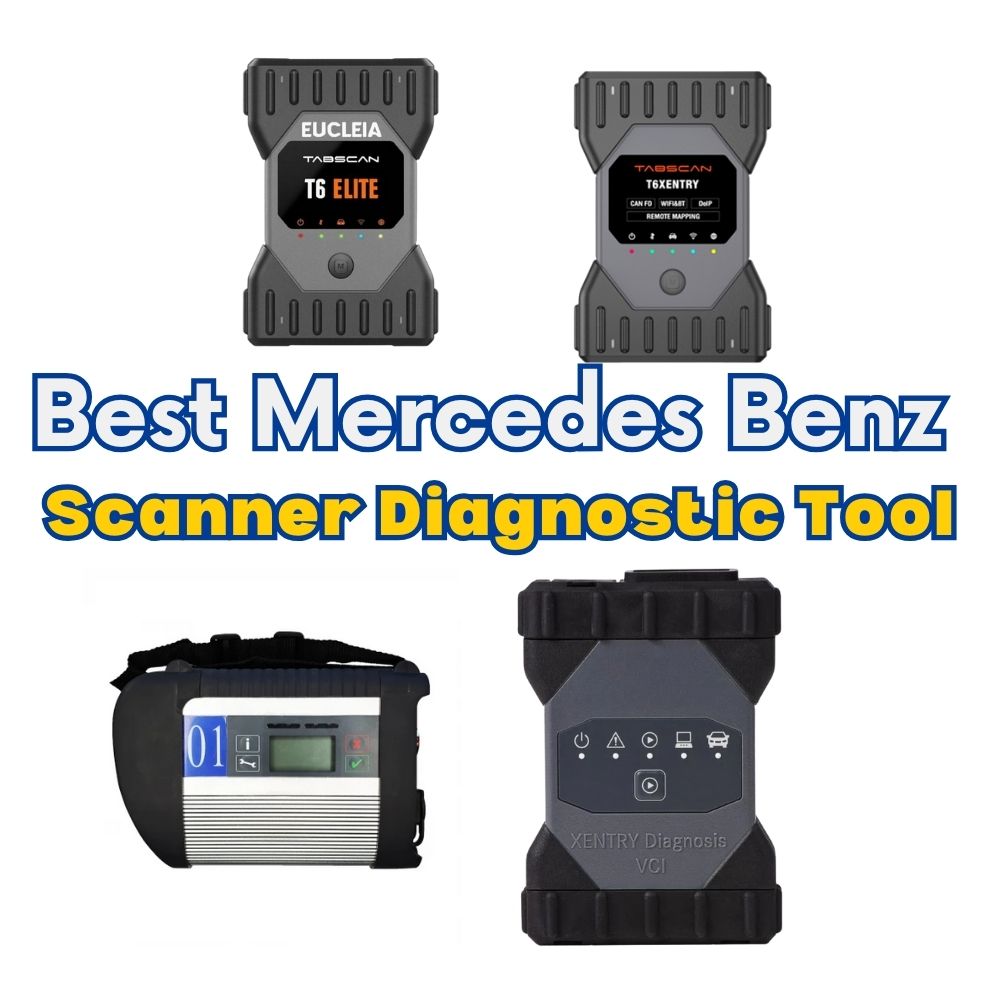
Best Mercedes Benz Scanner Diagnostic Tool | Update Latest 2025
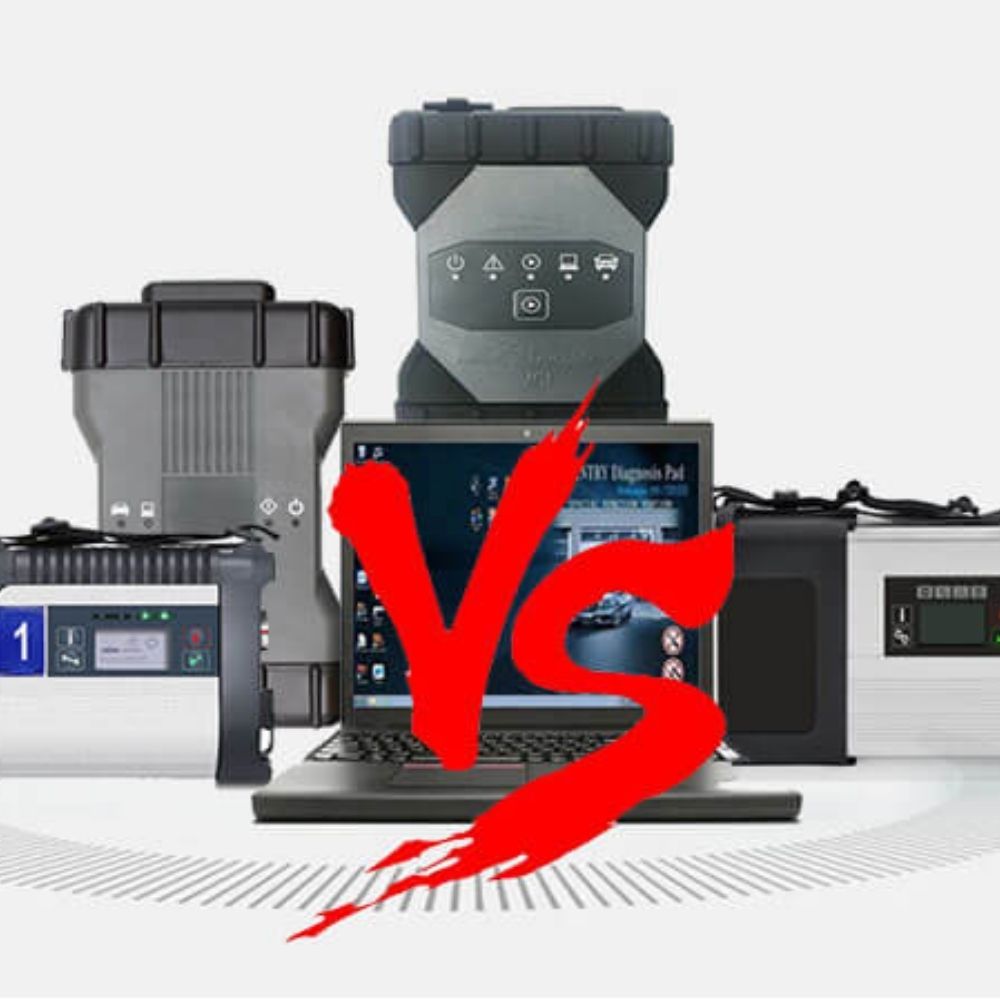
MB Star C4 vs C5 vs C6: What’s the difference between


Best BMW diagnostic tool: Top BMW Diagnostic and Coding tool 2025

Best VW Audi Diagnostic Tool – TOP 6 Best VAG Diagnostic Tools 2025





